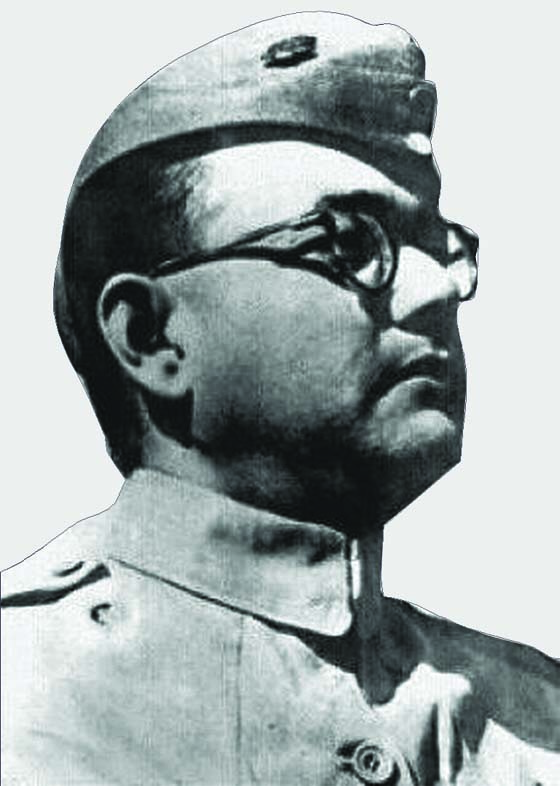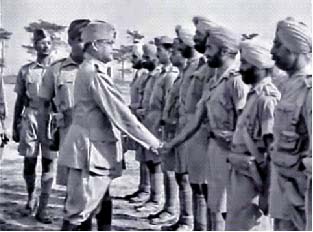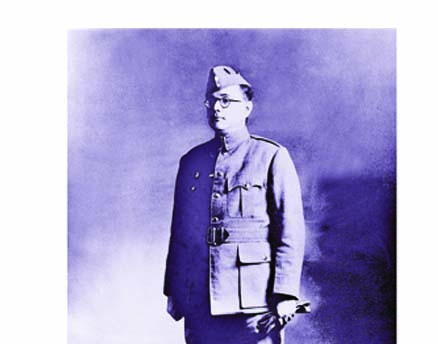March 23, 1931 was a sad but historical day in the history of India. On that day, three Indian revolutionaries and patriotic souls, Bhagat Singh, Shivaram Rajguru, and Sukhdev Thapar were hanged to death by the British. Their sole attribute, contrived as crime by the white skinned Imperialists, was “waging war and crusade against the British cruellest King” to liberate India from their brutal clutches. As the news reached Indian households, the entire nation plunged into mourning. The entire nation shut down their shutters and businesses were closed as a mark of protest against the imperialistic cruelty. The nation cried for the young, brave, and selfless revolutionaries. There was a general feeling of betrayal across the nation.
Patriotic Indians and nationalists alleged that Mahatma Gandhi had entered and concluded the Gandhi-Irwin Pact or Delhi Pact just weeks in advance without ensuring the commutation of the death sentences of Bhagat Singh, Rajguru, and Sukhdev. Capital punishment was an act of violence. Gandhi, as the defender of non-violence, could have opposed it by force of his arguments and perseverance, as also by resorting to keeping fast and hunger strike. Possibly, he could have saved the innocent and precious young lives of Bhagat Singh and his comrades, the firebrand youth leaders of India. However, he chose not to.
London was horrified by the murder of Lahore’s Assistant Superintendent of Police John Saunders on December 17, 1928 and the throwing of bombs in the Central Legislative Assembly chambers in New Delhi on April 8, 1929. They had blocked all appeals for suspension, clemency, and commutation, including that from Gandhi during his intense parleying with the Viceroy Lord Irwin over the issue. There were reports that the senior most bureaucracy threatened to resign en-masse if the sentence was commuted by the Viceroy. A pall of gloom hung over the Karachi Railway station with scores of youngsters in red shirts with black armbands and holding black flags. As the train bringing Mahatma Gandhi entered the platform, he was greeted with the slogans of “Gandhi go back”, “Down with Gandhism”, “Gandhi’s truce has sent Bhagat Singh to the gallows”, “Bhagat Singh ki jai,” and “Inqilab Zindabad” instead of the usual “Gandhijiki jai.”. The archival footage for the Newspaper Universal Newsreel of America recorded the events at the Karachi railway station reflecting the
spontaneous upheavals.
Young Indian leader Subhas Chandra Bose was shocked to hear that the lives of the three revolutionaries were not spared. He had a close association with Bhagat Singh and was a fellow traveller within the revolutionary movement. Bose recognised that the revolutionary had, upon his death, become the icon of the new awakening among India’s youth. In that fateful week of March 1931, Bose was invited to preside over the second annual session of the All-India Naujawan Bharat Sabha (a militant youth organisation) inspired by Bhagat Singh at Karachi. The thirty-four-year-old Bose emerged as the new leader of the Youth of India. This marked the beginning of a pivotal phase in India’s struggle for Independence from British tyranny.
For Bose, a meaningful life was one of sacrifices (balidaan) and service (seva). Despite frequent arrests and detentions by Hukumat-i-Britannia, Bose continued to address countless and
numerous youth conferences across India
During his student years in Calcutta (Kolkata now), Bose had amply exhibited the qualities of leadership and charisma. Very early on in life, he was drawn to the spiritual path. Bose wrote, “I was barely fifteen when Vivekananda entered and penetrated my life.” The message of this great Hindu sage profoundly inspired an entire generation. A child of the era of the Indian Renaissance, he decided to devote his life to service. After Bose rebelled and resigned from the Indian Civil Service in 1921, he focused on the role of the youth in the nation’s freedom movement. In 1923, Subhas Chandra Bose wrote in what he called Dreams of youth, “…we have been born into this world in order to fulfill a purpose – to spread a message. Just as the sun rises to flood the earth with light, as flowers bloom in the forest to spread their fragrance, as the river rushes to the sea to bring the sweet refreshing rain – we have come to this world, full of joy and with the fullness of our hearts, to establish a truth. And that is to discover the unknown and mystical purpose of life, through contemplation and a life of action, that only can make our otherwise senseless existence, meaningful.”
For Bose, a meaningful life was one of sacrifices (balidaan) and service (seva). Despite frequent arrests and detentions by Hukumat-i-Britannia, Bose continued to address countless and numerous youth conferences across India. Towards the end of 1928, while speaking at the All-India Youth Congress, Bose informed the delegates that “across the world there was a renaissance of youth”. Acknowledging “a feeling of restlessness, of impatience with the present order”, he promoted the cause of Youth Associations in India as agents for change. Speaking at the Punjab Students’ Conference in Lahore on October 19, 1929, he roared, “thought without action cannot suffice to build character, and for this reason, participation in healthy activity – political, social, artistic etc. – is imperative and urgent for developing character”. And at the first Youth Conference in Nagpur in 1929, Bose declared, “every human being – man or woman – is born equal, and he or she shall have equal opportunities of development – which should be our dictum.”

“If Swamiji had been alive today, he would have been my guru, that is to say, I would have accepted him as my Master. Needless to say, as long as I live, I shall be absolutely loyal and devoted to Ramakrishna-Vivekananda”
—Netaji Subhash Chandra Bose on Swami Vivekananda
The fearless Bose asserted not only that the rule of British over India was incorrect but added that the Indian freedom struggle had no place for mystics and vague philosophers. His popularity amongst the youth was amply demonstrated when the democratic verdict of the unprecedented electoral contest for the post of the President of Congress was delivered on January 29, 1939. Gandhi’s candidate Pattabhi Sitaramayya got only 1,375 while Bose emerged victorious with 1,580 votes. He had overwhelming support in Karnataka, Kerala, and Tamil Nadu in the south, Assam and Bengal in the east, and Punjab and the United Provinces in the north. For the first time in two decades, Gandhi’s supreme authority over the freedom movement was effectively challenged by the younger man. Gandhi was 69 at the time and Bose was a youthful 42 – the youngest President of the Congress Party. Though he was subsequently forced to resign there was no turning back from then onward.
Bose’s effectual escape from India in January 1941 and the dangerous submarine journey to the Far East during WW2 made him the superstar of the Indian freedom movement. His youthful daring, burning zeal, characteristic idealism, non-communalism, and unbelievable heroism in leading the Azad Hind Fauj inspired the youth of India. A young Captain Shah Nawaz Khan became an ardent follower of Bose and joined the Azad Hind Fauj. He later revealed his admiration for Netaji, stating, “From the moment I came into personal contact with him (Bose), he exercised a strange influence over me. Even now, I do not know in what proportion the man, the soldier and the statesman in him were blended. At home the man in him seemed to dominate; at the front and in the midst of his troops, the soldier in him shone in splendid glory and in the councils and conferences and at his desk… his brilliant statesmanship made a profound impression on one and all of us”. Bose’s stirring speeches over the radio caught the imagination of the nation. The idea of the Azad Hind Fauj magnificently obliterated the loyalty of the masses to the King-Emperor in London. Even sections of the three-Armed forces revolted against the despotic empire after the famous INA trials at the Red Fort in 1945. This was the final blow which destroyed the authoritarian British regime.

On January 23, 1947, Gandhi summed up Bose’s overwhelming accomplishments: “He had sacrificed a brilliant career for the sake of the country’s service. He suffered various imprisonments, twice became President of the Congress, and at last, by great strategy gave the slip to the guard put over him by the Government of Bengal and by sheer courage and resourcefulness reached Kabul, passed through European countries, and finally found himself in Japan, collected from scattered material an army of brilliant young men drawn from all communities and from all parts of India and dared to give battle to a mighty Government. A lesser man would have succumbed under the trials that he went through, but he in his life verified the saying of Tulsidas that “all become right for the brave”.
Netaji’s life, even 75 years after independence, is a motivating story of indomitable courage, sacrificial patriotism, and noble service. As India enters its Amrit Kaal, Bose’s life and work retain an irresistible appeal for the youth. The idol of the masses Bose had profound faith in the young Indians, not only to liberate India, but also to build a better world. His thoughts and ideas of nationalism, gender equality, and sterling character development are an inspiration in our national mission glory on the world stage.
Netaji Subhas Chandra Bose’s name remains etched in gold in Indian history. Perhaps for many centuries, we may not see another one like him.




















Comments